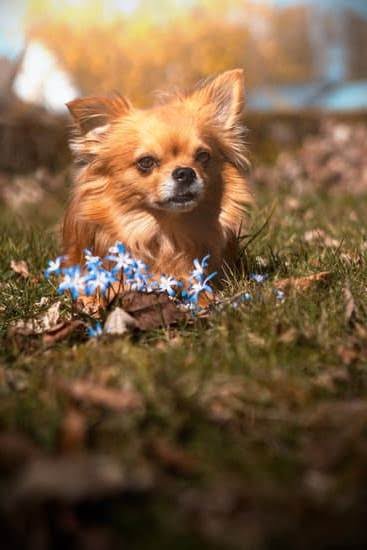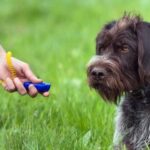Do you ever wonder how to train your dog to hunt squirrels? Teaching your furry friend to track and hunt squirrels can be an exciting and rewarding experience for both you and your canine companion. In this article, we will explore the natural instincts of dogs and their prey drive, as well as provide a comprehensive guide on how to effectively train your dog to become a skilled squirrel hunter.
Dogs have been natural hunters for centuries, with many breeds possessing a strong prey drive that makes them excellent candidates for squirrel hunting. Understanding these natural instincts is crucial in training your dog to become a successful squirrel hunter. By tapping into their innate abilities and providing the right training, you can help your dog develop the skills needed for this specialized form of hunting.
Choosing the right dog breed is essential for squirrel hunting, as certain characteristics make some breeds better suited for this activity than others. In this article, we will discuss the key traits to look for when selecting a breed for squirrel hunting, as well as provide insight into basic obedience training and building tracking skills.
Join us as we delve into the world of training dogs to hunt squirrels, with tips and techniques to help you and your canine companion embark on this exhilarating journey.
Choosing the Right Dog Breed for Squirrel Hunting
When it comes to training your dog to hunt squirrels, choosing the right breed is essential. Not all dog breeds are natural hunters or have the same prey drive, so it’s important to select a breed that is suited for squirrel hunting. Here are some key characteristics to look for when choosing a dog breed for squirrel hunting:
- High prey drive: Look for breeds with a strong instinct to chase and hunt small animals, such as terriers, hounds, and gun dogs.
- Agility and endurance: Squirrel hunting requires agility and stamina, so breeds like Jack Russell Terriers, Beagles, and Treeing Walker Coonhounds are often well-suited for this activity.
- Trainability: Choose a breed that is easily trainable and responsive to commands, as this will make the training process smoother.
It’s also important to consider the size of the dog and its ability to navigate through dense vegetation and rough terrain. Smaller breeds may be better equipped for maneuvering through wooded areas where squirrels are typically found.
In addition to breed characteristics, individual temperament should also be taken into account. While certain breeds may have a natural inclination for hunting, each dog is unique, and their willingness to engage in squirrel hunting can vary. It’s essential to assess your dog’s personality and willingness to learn how to track and locate squirrels before committing them to formal training.
Ultimately, selecting the right breed for squirrel hunting lays the foundation for successful training. By considering these characteristics when choosing a dog breed, you can set your canine companion up for success in their squirrel hunting endeavors. Now that you’ve identified your prospective partner in crime, it’s time to move on to basic obedience training tailored towards their future squirrel-hunting adventures.
Basic Obedience Training for Squirrel Hunting
When it comes to training your dog to hunt squirrels, basic obedience training is a crucial first step. Teaching your dog essential commands and behaviors will not only make the training process easier but also ensure the safety and success of hunting trips. Here are some key elements to consider when conducting basic obedience training for squirrel hunting.
Understanding Essential Commands
Before diving into specific squirrel-hunting commands, it’s important to establish a solid foundation of basic obedience commands such as sit, stay, come, and heel. These commands will form the basis of your dog’s ability to follow directions and communicate with you effectively during hunting excursions. It’s essential that your dog responds reliably to these commands in various environments and distractions.
Building Focus and Self-Control
In addition to learning basic commands, your dog should also develop focus and self-control. This means being able to maintain their attention on you despite potential squirrel sightings or scents. Using positive reinforcement techniques like treats, praise, and play can help build focus and self-control in your dog.
Establishing Proper Behavior
Teaching your dog appropriate behavior when hunting squirrels is just as important as teaching them commands. This includes teaching them not to chase other animals, remain calm when encountering squirrels, and obeying commands even when excited. Consistent practice and patience are key in establishing these desirable behaviors in your dog.
By focusing on basic obedience training and instilling good behavior in your canine companion, you are laying a solid foundation for successful squirrel hunting experiences. Remember that every dog learns at its own pace, so be patient and consistent in your training efforts.
Introducing Your Dog to the Scent of Squirrels
One of the most important aspects of training your dog to hunt squirrels is developing their ability to track and follow the scent of these elusive animals. Dogs have an incredible sense of smell, and harnessing this skill is essential for successful squirrel hunting. To start building your dog’s tracking skills, you can begin with simple scent exercises in a controlled environment.
To introduce your dog to the scent of squirrels, you can use items like squirrel scent drags or squirrel scent-infused toys. Start by placing these scented items in different locations and encouraging your dog to find them using their nose. Reward your dog with treats and praise when they successfully locate the scented item, reinforcing their natural inclination to follow the scent.
Furthermore, it is crucial to gradually increase the difficulty of these tracking exercises as your dog becomes more proficient at following the squirrel scent. You can set up more challenging scenarios by placing the scented items higher off the ground or in areas with distractions. Over time, your dog will become more adept at tracking squirrels through various terrains and environments.
| Training Tip | Key Benefit |
|---|---|
| Use squirrel scent drags or toys | Helps introduce your dog to the scent of squirrels |
| Gradually increase difficulty of exercises | Improves your dog’s ability to track squirrels in different conditions |
As you progress with building your dog’s tracking skills, it is important to remain patient and consistent with their training. With dedication and practice, your dog will develop a keen ability to track squirrels effectively, setting the stage for successful hunts in the future.
Simulated Squirrel Hunting Exercises
When it comes to training your dog to hunt squirrels, simulated squirrel hunting exercises can be incredibly effective in honing their skills and instincts. By incorporating toys and scents into your training regimen, you can help your canine companion develop the necessary tracking and hunting abilities needed for real squirrel hunting experiences.
Using Scented Toys
One of the first steps in simulated squirrel hunting exercises is introducing your dog to scented toys that mimic the smell of squirrels. You can purchase specially designed training toys that are infused with squirrel scent or use natural materials such as fur or feathers from squirrels. Start by playing with these scented toys with your dog indoors to get them familiar with the scent and associate it with playtime.
Creating Scent Trails
Another effective method is creating scent trails for your dog to follow. This can be done by dragging a squirrel-scented item along a path in your yard or a designated training area. Encourage your dog to follow the trail using verbal commands and rewards, such as treats or praise, when they successfully track the scent. Gradually increase the complexity of the trails and incorporate turns and obstacles to challenge their tracking abilities.
Implementing Hide-and-Seek Games
Hide-and-seek games using squirrel-scented objects can also be beneficial for honing your dog’s hunting skills. Hide the scented toy in different locations within a controlled environment and encourage your dog to use their sense of smell to locate it. This not only reinforces their ability to track scents but also encourages them to use their natural instincts to “hunt” for the hidden object.
By incorporating these simulated squirrel hunting exercises into your training routine, you can effectively prepare your dog for real hunting experiences while also strengthening the bond between you and your furry friend. With consistency, patience, and positive reinforcement, you can help unleash your dog’s innate hunting abilities in a safe and engaging manner.
Field Training
Once your dog has mastered basic obedience training and has shown a strong interest in the scent of squirrels, it’s time to take them into the outdoors for field training. This is where your dog will have the opportunity to put their skills to the test in a real-life environment and practice hunting squirrels in a natural setting.
When taking your dog out for field training, it’s important to start in a controlled environment such as a fenced-in area or a quiet wooded area where you have permission to train. Begin by using scented toys or hides that mimic the scent of squirrels and encourage your dog to use their tracking skills to locate the “prey.” Gradually increase the difficulty by introducing distractions and obstacles to simulate real hunting conditions.
During field training, it’s crucial to reinforce positive behavior and praise your dog for their efforts. Use treats, toys, and plenty of encouragement to keep them motivated and focused on the task at hand. Remember that patience is key, as some dogs may take longer than others to fully grasp the concept of hunting squirrels.
As you continue with field training sessions, observe your dog’s progress closely and make note of any areas where they may need additional support or reinforcement. By providing consistent guidance and ample opportunities for practice, you can help your dog develop their hunting instincts and become proficient in tracking and treeing squirrels in outdoor settings. With dedication and persistence, you’ll be well on your way to having a capable squirrel-hunting companion by your side.
Safety Measures and Ethical Considerations for Hunting With Your Dog
When training your dog to hunt squirrels, it is important to prioritize safety measures and ethical considerations. Firstly, always ensure that your dog is equipped with a properly fitted hunting vest or collar to keep them visible in the woods and protect them from any potential hazards. Additionally, consider using protective boots for your dog’s paws, especially when navigating through rough terrain.
Another crucial aspect of hunting with your dog is to always be aware of the environment you are in and any potential risks present. This includes being mindful of other wildlife, fellow hunters, or even changing weather conditions that could impact your dog’s safety. Taking these precautions can help prevent accidents and ensure a safer hunting experience for both you and your canine companion.
It is also important to uphold ethical considerations when training your dog to hunt squirrels. This means respecting all local hunting regulations and obtaining the necessary permits before engaging in any hunting activities with your dog. Always prioritize the well-being of the wildlife and follow ethical hunting practices to ensure a responsible and sustainable approach to squirrel hunting with your dog.
Lastly, make sure that you consistently reinforce positive behavior in your dog throughout the training process. Using rewards such as treats, praise, or playtime can help reinforce good behavior while discouraging any negative actions. By prioritizing safety measures and ethical considerations, you can train your dog to become a skilled squirrel hunter while promoting a responsible approach to hunting activities.
| Safety Measures | Ethical Considerations |
|---|---|
| Equip dog with proper gear (vest/collar) | Respect local hunting regulations |
| Be aware of potential risks in the environment | Obtain necessary permits for hunting |
| Reinforce positive behavior through rewards | Prioritize well-being of wildlife during hunts |
Troubleshooting Common Challenges in Training Your Dog to Hunt Squirrels
Training your dog to hunt squirrels can be a rewarding experience, but it also comes with its fair share of challenges. One common issue that many dog owners face is the lack of focus and attention from their dogs during training sessions.
It’s important to remember that hunting squirrels can be very stimulating for your dog, so it’s essential to find ways to keep their attention on the task at hand. One effective method is to incorporate high-value treats or toys into your training sessions to keep your dog motivated and focused.
Another challenge that often arises is teaching dogs to differentiate between different scents while hunting squirrels. Dogs have a strong sense of smell, but they may need some guidance in learning to distinguish squirrel scent from other distractions in the environment. One way to tackle this challenge is by using scent-specific training aids and gradually introducing your dog to the scent of squirrels in controlled environments before moving on to more challenging outdoor settings.
Furthermore, some dogs may exhibit excessive prey drive when hunting squirrels, which can lead to behavior problems such as incessant barking or pulling on the leash. To address this issue, it’s crucial to work on impulse control and obedience training with your dog. Teaching them commands like “leave it” and “stay” can help manage their excitement and prevent undesirable behaviors while out on a hunt.
Celebrating Success
In conclusion, training your dog to hunt squirrels can be a rewarding experience for both you and your furry companion. By understanding the natural instincts of dogs and their prey drive, choosing the right breed, and providing basic obedience training, you can set the foundation for successful squirrel hunting. Introducing your dog to the scent of squirrels and engaging in simulated hunting exercises will further develop their tracking skills before moving on to field training.
As you progress through the training process, it is important to incorporate safety measures and ethical considerations when hunting with your dog. This includes ensuring that your dog is well-trained to follow commands and behave appropriately in the field. Additionally, being mindful of wildlife regulations and practicing responsible hunting behaviors will contribute to a positive hunting experience for both you and your dog.
After overcoming common challenges in training, celebrating success involves graduating to real squirrel hunting experiences. This may include tips for a successful hunt, such as scouting for squirrel habitats, utilizing proper equipment, and strategizing with your trained dog.
Remember that patience, dedication, and consistent reinforcement of training are key components in achieving success in training your dog to hunt squirrels. With time and effort, you can enjoy the fruits of your labor by engaging in fulfilling hunting experiences with your canine companion.
Frequently Asked Questions
What Is the Easiest Dog to Train for Squirrel Hunting?
The easiest dog to train for squirrel hunting is the feist or the mountain cur. These breeds have a natural instinct for treeing and chasing small game, making them well-suited for squirrel hunting.
What Is the Best Time of Day to Hunt Squirrels With a Dog?
The best time of day to hunt squirrels with a dog is early morning or late afternoon. Squirrels are most active during these times, making it easier for dogs to locate and tree them.
What Age Should You Start Training a Squirrel Dog?
It’s ideal to start training a squirrel dog at around 6-8 months of age. This is when they are still young and impressionable, making it easier to instill the necessary skills and behaviors needed for squirrel hunting.

Welcome to the blog! I am a professional dog trainer and have been working with dogs for many years. In this blog, I will be discussing various topics related to dog training, including tips, tricks, and advice. I hope you find this information helpful and informative. Thanks for reading!





